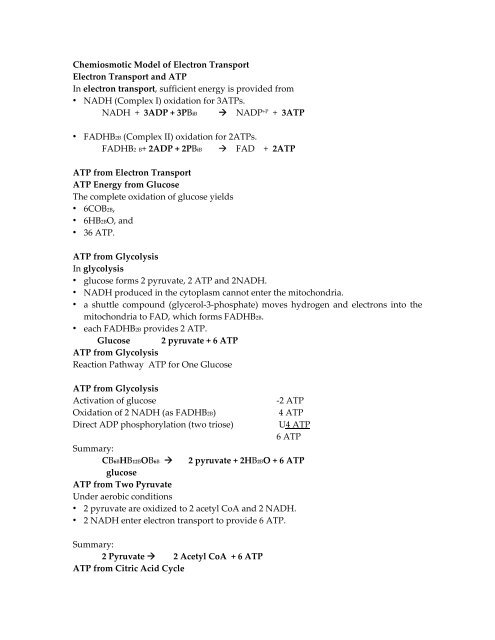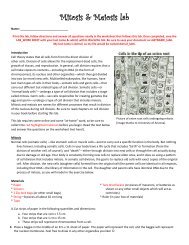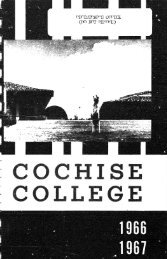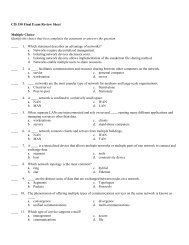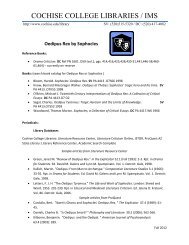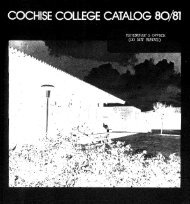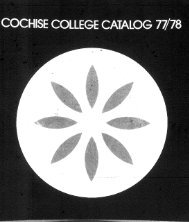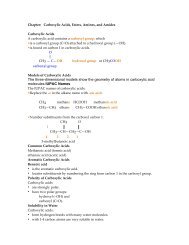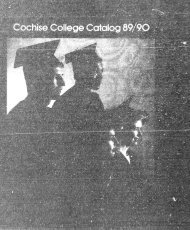You also want an ePaper? Increase the reach of your titles
YUMPU automatically turns print PDFs into web optimized ePapers that Google loves.
Chemiosmotic Model of Electron TransportElectron Transport and ATPIn electron transport, sufficient energy is provided from• NADH (Complex I) oxidation for 3ATPs.NADH + 3ADP + 3PBiB NADP +P + 3ATP• FADHB2B (Complex II) oxidation for 2ATPs.FADHB2 B+ 2ADP + 2PBiB FAD + 2ATPATP from Electron TransportATP Energy from GlucoseThe complete oxidation of glucose yields• 6COB2B,• 6HB2BO, and• 36 ATP.ATP from GlycolysisIn glycolysis• glucose forms 2 pyruvate, 2 ATP and 2NADH.• NADH produced in the cytoplasm cannot enter the mitochondria.• a shuttle compound (glycerol‐3‐phosphate) moves hydrogen and electrons into themitochondria to FAD, which forms FADHB2B.• each FADHB2B provides 2 ATP.Glucose 2 pyruvate + 6 ATPATP from GlycolysisReaction Pathway ATP for One GlucoseATP from GlycolysisActivation of glucose‐2 ATPOxidation of 2 NADH (as FADHB2B)4 ATPDirect ADP phosphorylation (two triose)U4 ATP6 ATPSummary:CB6BHB12BOB6B 2 pyruvate + 2HB2BO + 6 ATPglucoseATP from Two PyruvateUnder aerobic conditions• 2 pyruvate are oxidized to 2 acetyl CoA and 2 NADH.• 2 NADH enter electron transport to provide 6 ATP.Summary:2 Pyruvate 2 Acetyl CoA + 6 ATPATP from Citric Acid Cycle


